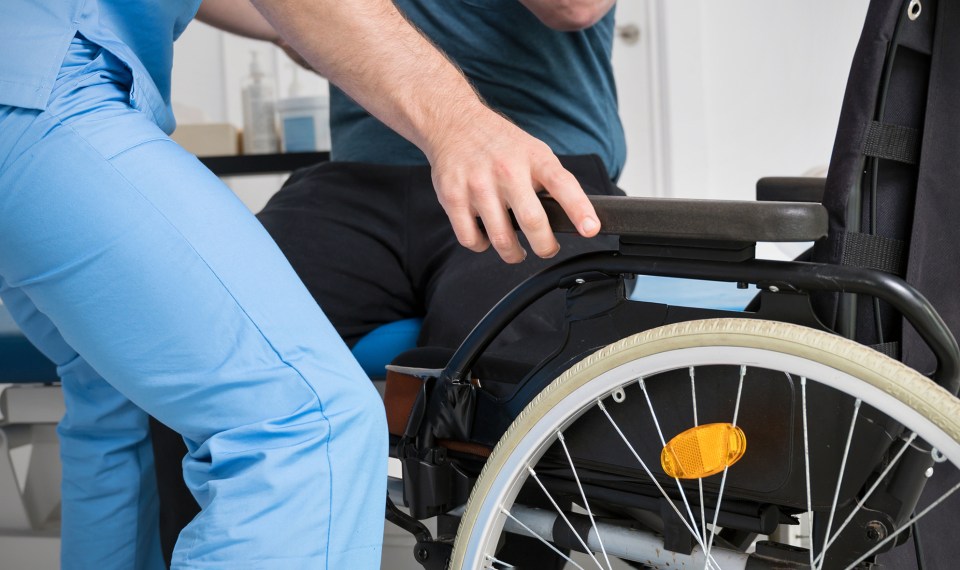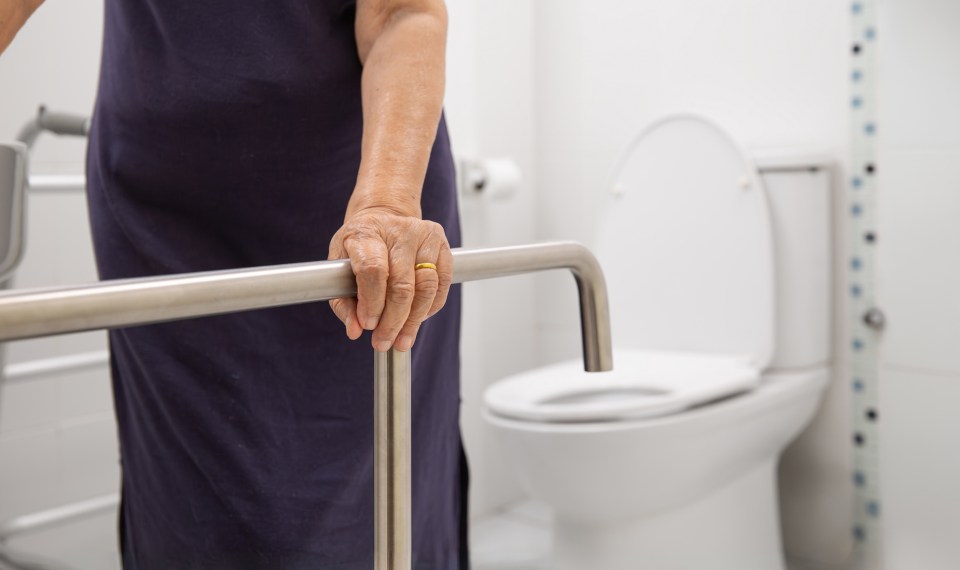Someone who experiences a stroke or other illness or injury often requires assistance with mobility during and after recovery. For many, this means they will need a wheelchair either temporarily or permanently.
According to the National Library of Medicine, an estimated 2.2 million Americans use wheelchairs as their primary mode of mobility. Wheelchairs are one of the most important modes of mobility for these individuals, but in order for them to return to their highest level of independence, they need to be evaluated and fitted with the right wheelchair and positioning.
Finding the Right Fit
The wheelchair has positively impacted individuals who endure significant limitations in functional mobility and activities of daily living, or ADLs. According to the National Library of Medicine, patients with spinal cord injuries are seated in a wheelchair nine to 11 hours per day. Almost half of all wheelchair users are limited in at least one ADL.
The process of finding a wheelchair that is the right fit for a patient involves an interdisciplinary approach with healthcare professionals who are knowledgeable on this topic.
The World Health Organization recommends these eight steps to get a custom wheelchair for a patient:
- Make a referral and schedule an appointment with a wheelchair service.
- Conduct a wheelchair evaluation and assessment.
- Write a wheelchair prescription signed by physical therapist and physician.
- Verify insurance coverage and/or additional funding options.
- Prepare and set-up device.
- Fit the wheelchair to the patient.
- Instruct and educate the patient on usage.
- Conduct routine maintenance/repairs.
Custom Wheelchair Evaluation
A physical therapist may initiate a custom wheelchair order for a patient while in a rehabilitation hospital in order to provide the patient with optimal mobility and function. A custom wheelchair could be recommended for a patient with contractures, spasticity, sensory loss, paralysis, paresis, feeding issues, respiratory conditions, or amputations. Additionally, a wheelchair is beneficial for the patient if long-term assistance is needed to perform ADLs and instrumental activities of daily living, or IADLs.
A custom wheelchair can help a patient better navigate their home and community and participate in social and vocational activities.
The decision for most custom wheelchair orders is based on the patient’s short-term and long-term goals and discharge destination plans.
Types of Wheelchairs
Wheelchair prescriptions are based on the patient’s mobility and impairments. Standard manual wheelchairs have a 24-inch diameter rear wheels and 8-inch diameter front casters. They weigh between 40 and 65 pounds and are self-propelled by the individual.
Standard manual wheelchairs are frequently assigned to a patient when they are admitted to inpatient rehabilitation. When appropriate, a physical therapist may recommend other wheelchair options including:
- Hemi-wheelchairs.
- Lightweight.
- Ultra-lightweight.
- One-arm drive.
- Sports specific.
- Standard heavy-duty.
- Pediatric.
- Transport.
- Standing.
- Tilt-in-space.
- Recliner.
- Motorized wheelchairs.
Custom wheelchairs will typically require a signed order by the inpatient rehabilitation physician. The wheelchair fitting task is assigned to a durable medical equipment company or rehabilitation technology specialist.
The Importance of Wheelchair Seating Evaluations
The seating system is an essential component of designing a custom wheelchair. To avoid pressure ulcers, patients should always be fitted for a wheelchair seating surface and cushion.
Wheelchair seats should provide support, normal anatomical alignment, stability, allow for completion of ADLs/IADLs, and uniformly distribute pressure across bony areas at the pelvis and sacrum. An optimal seating system should also provide support to the trunk and pelvis.
The goal of the wheelchair seat evaluation is to have the pelvis positioned with a slight anterior tilt to distribute weight evenly through the buttocks and posterior thigh and to determine the appropriate seat width, so the patient can access the wheels to self-propel. An outcome measure called the Tool for Assessing Wheelchair Discomfort may be used to gauge the patient’s satisfaction following the wheelchair seating evaluation (Owens, 2023).
Clinical Significance
For wheelchair users, proper positioning is not just about comfort; it is crucial for their health and well-being. Proper wheelchair positioning can help:
- Prevent pressure ulcers.
- Reduce upper extremity injuries.
- Prevent wheelchair tips and falls.
- Improve quality of life.
- Promote independence.
Patients will experience unforeseen consequences when a wheelchair is poorly fitted. A standard wheelchair is only 5% efficient, which means 95% of the patient’s effort is expended in the form of nonproductive energy (Gavin-Dreschnack, 2004).
The upper extremities are not built to perform repetitive large wheelchair propulsion movements; therefore, a properly fitted wheelchair is an important factor in reducing strain injuries.
It is the responsibility of physical therapists to initiate and facilitate communication between the wheelchair provider and patient throughout the wheelchair evaluation process. Once the patient has received their wheelchair, physical therapists should:
- Perform skin checks.
- Educate on how to maneuver the wheelchair over even and uneven terrain.
- Reassess posture and seating position while performing exercises or ADLs/IADLs.
- Perform pressure relief.
- Teach how to safely transfer in and out of the wheelchair.
According to American Geriatrics Society, new wheelchair users who receive quality training and education by an expert therapist are more likely to utilize their wheelchair after discharging from inpatient rehabilitation (Hoenig, 2005).
Physical therapists can make significant contributions to a patients’ quality of life by ensuring their wheelchair is the right fit for them.
References:
Gavin-Dreschnack, D. (2004). Effects of wheelchair posture on patient safety. PubMed, 29(6), 221–226. https://pubmed.ncbi.nlm.nih.gov/15598002
Owens, J., & Davis, D. D. (2023). Seating and wheelchair evaluation. StatPearls. https://pubmed.ncbi.nlm.nih.gov/32644657/
Hoenig, H., Landerman, L. R., Shipp, K. M., Pieper, C., Pieper, C., Richardson, M., Pahel, N., & George, L. (2005). A clinical trial of a rehabilitation expert clinician versus usual care for providing manual wheelchairs. Journal of the American Geriatrics Society, 53(10), 1712–1720. https://doi.org/10.1111/j.1532-5415.2005.53502.x
The content of this site is for informational purposes only and should not be taken as professional medical advice. Always seek the advice of your physician or other qualified healthcare provider with any questions you may have regarding any medical conditions or treatments.



